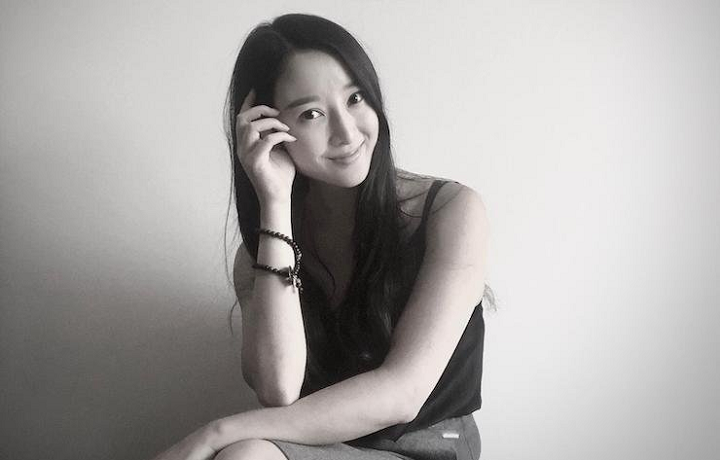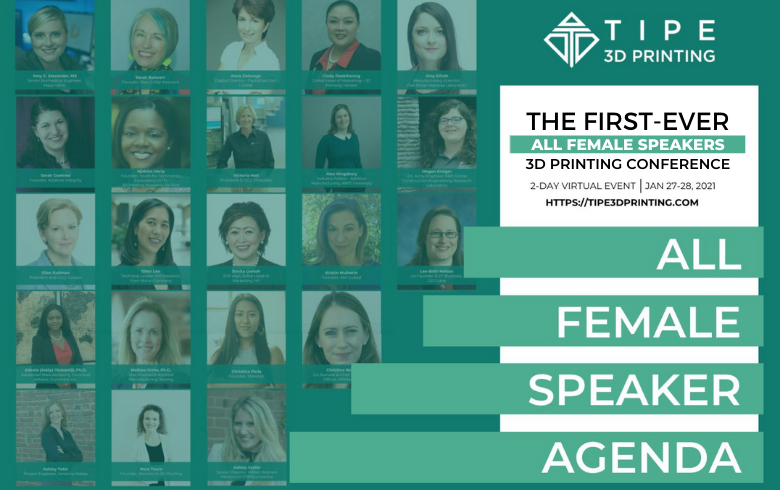Recently, I had the pleasure of speaking with Chengxi Wang, the CEO of professional 3D printer developer Satori, which officially entered the 3D printing market with the launch of its compact, resin-based ST1600 system this fall. In addition to this new 3D printer, Satori, which means “enlightenment” in Japanese Zen, also offers high-performance 3D printing materials, 3D printer accessories, a business and technical consultation service for clients, and an on-boarding period for customers who purchase the ST1600.
The company also launched its new partnership program in order to work with innovators and creatives from different industries around the world to develop impactful, problem-solving initiatives. During Formnext Connect, I spoke with Wang and Mahdi Naim of the Mahdi Naim Design Lab, a full-service industrial design agency and the first partner in the company’s new program. Satori and Mahdi Naim collaborated on a collection of three unique but functional 3D printed pieces people can use while working from home that are meant to improve their workspace during the ongoing COVID-19 crisis.
Before the three of us discussed the partnership on our call, I was able to speak with Wang and learn more about her background and how she found her way to the 3D printing world. But as a woman leading a tech company, I knew Wang would also have some valuable insights into the diversity of our industry.
I asked if her daily experiences as a female CEO in the tech industry were very different than the experiences of men in similar positions; unfortunately but unsurprisingly, she said yes. As an example, Wang said that she likes fashion, and normally dresses up and wears high heels, and people will look at her and say that it’s hard to imagine she runs a tech company. What’s worse, they feel justified in expressing this thought out loud to her.
“I would say it’s very different. I personally was challenged, when people hear that you’re a female CEO in tech,” she said. “It took me a while to make them understand why I think females have a different perspective in the tech industry….I think it’s fundamentally misunderstood in the industry that technology is just masculine. I think females have a very beneficial perspective, because sympathy and emotions are things we’re naturally born with, which is exactly what’s needed in technology.
“When we talk about technology, what words come to mind? Artificial intelligence, machine learning, and every word is about the thing, and we seem to detach the thing from human beings. But what technology is doing is serving human beings, instead of the machine becoming so great that it dominates, with humans feeling inferior to it. And, in order to really make technology serve humanity, we have to add emotions, to add this softer part—sympathy. That’s why I feel technology itself only matters when it’s connected to human beings, and to serve that final function.
“Back to the question of being a female CEO in tech: the daily work is not so much how can we push the boundary of the technology. We need to consider the needs of the customers with a sympathetic eye, and then finally combine the technological development with customer needs, and to serve them. In that regard, I think the ultimate expression of a technology product is a combination of functionality and artistic beauty, and I think for a female CEO, that’s a big asset to add to technology—to have this more sympathetic, emotional and artistic component to the final product.”
I asked Wang if, even given her experiences as a female CEO, she thought that the tech industry is more diverse now than it was five or ten years ago. According to Women in 3D Printing, which is on a mission to close the gender gap in additive manufacturing, roughly 13% of the AM industry is female, and only 11% of the businesses are female-owned, including Satori. Wang said that she’s seen other statistics on this topic, which always say that this issue is improving, but in her personal experience, “it’s still an ongoing battle.”
“Females in the tech industry have to prove very hard to show that they deserve a place here, versus men, in which it’s almost like automatic recognition. I think the very fact that we’re still talking about women in tech today shows there’s a big challenge here. For example, if you’re talking about the fashion industry, women in fashion is not normally such an issue, but in tech, you have to specifically mention women, and that means there’s a lot of work we need to continue.”
In light of this, I wondered what Wang thought were some of the biggest challenges to diversity in 3D printing, and in technology overall.
“I think fundamentally it’s a thinking process in the technology industry,” she told me. “It’s not so much an HR problem, it’s not about recruiters needing to give more quota to females. Fundamentally people think tech products are just serving males, and, therefore, they don’t see the need of a contribution from a female employee because they think, if males are the predominant user of our product, why do we need someone who’s not our target audience to develop our product? Which is fundamentally wrong.”
She brought up an article she’d read a few years ago about augmented reality glasses, and how they were generally too big and didn’t really fit women’s eyes. Why, you ask? Because the team in charge of developing, testing, and producing the prototype product was “predominantly males.”
“They already exclude the female as their target audience, and then, when they push this product to the public, you assume that it’s out of the question for a female to contribute. Therefore, when the company receives feedback from the customer, they do not see a lot of female customers using the product and, therefore, why do we need a feminine perspective?
“So, I think, regarding the challenge for the tech industry, fundamentally we go back to how people perceive a tech product. A tech product doesn’t have a gender. In some ways, I think a tech product can be feminine as well, when it’s perfectly combined with beauty and artistic value. So, once we sort out this perspective, then I think an employer will have a more internal drive to hire more females. Because they see there’s a market there, and there’s a force driving this feminine perspective’s contribution.”
The way she explains it, it’s not hard to see that gender bias in technology is definitely a cyclical problem, and one that needs to be solved so products can fit the needs of all consumers.
I mentioned Ruth Bader Ginsburg, who was an associate justice of the Supreme Court of the United States from 1993 until her recent death, and how some people who asked her when there would be enough women serving as Supreme Court justices were shocked when she would reply, “When there are nine.” There have been nine men on the Supreme Court before, and no one had an issue with it, so why would they with nine women? In this vein, I asked Wang what her hopes were for a more diverse 3D printing workforce in the future.
“I think it’s not just about the number,” she told me. “I think it’s also about the open mindedness for the young girls. We see a lot of senior female executives in tech…but if this industry is open to more young girls, like female entrepreneurs or young girls taking more leadership roles in the tech industry to contribute their perspective, I think that will be huge progress. I think the tech industry in general should embrace more risk by being inclusive and open to younger female voices.”
I asked if she had any advice for young women who were interested in technology, but might be nervous about the prospect of being the only girl in the class. Wang said that young girls should not change themselves to fit a stereotype, and then continued with a beautiful metaphor that just about knocked me out of my seat:
“The whole tech industry may not be a garden of flowers yet, but trust yourself as a beautiful flower and bloom courageously. And then, when people see the beauty of you, more flowers will bloom. I think it’s ultimately about trusting your feminine perspective and contributing to it bravely. There’s a challenge, but do it your way, and one day you will pave a special way out of this.”
I thoroughly enjoyed my conversation with Wang, and thought that she made a lot of excellent points. We can’t make quality products that best serve all people until all those people, including women, are included in the discussion. Wang will have the opportunity to share more of her thoughts on the 3D printing industry soon, as she will be speaking at the upcoming Women in 3D Printing TIPE 3D Printing Conference; fittingly, this is the first time in the AM industry that the speakers and panelists on the agenda for a conference will all be women. The virtual event will be held from January 27-28, 2021, and Wang will be participating in the “Pushing the Limits of AM in Healthcare” panel on the 28th. You can register for the conference here. There is no cost for simple live stream access, and only $95 if you want access to both the live event and replays.
I also noticed on Satori’s website that its latest partner is 3D fashion and textile designer Ganit Goldstein, which is really exciting news. I can’t wait to hear more about what Satori and its partners create and 3D print together in the future.
Subscribe to Our Email Newsletter
Stay up-to-date on all the latest news from the 3D printing industry and receive information and offers from third party vendors.
You May Also Like
Profiling a Construction 3D Printing Pioneer: US Army Corps of Engineers’ Megan Kreiger
The world of construction 3D printing is still so new that the true experts can probably be counted on two hands. Among them is Megan Kreiger, Portfolio Manager of Additive...
US Army Corps of Engineers Taps Lincoln Electric & Eaton for Largest 3D Printed US Civil Works Part
The Soo Locks sit on the US-Canadian border, enabling maritime travel between Lake Superior and Lake Huron, from which ships can reach the rest of the Great Lakes. Crafts carrying...
Construction 3D Printing CEO Reflects on Being Female in Construction
Natalie Wadley, CEO of ChangeMaker3D, could hear the words of her daughter sitting next to her resounding in her head. “Mum, MUM, you’ve won!” Wadley had just won the prestigious...
1Print to Commercialize 3D Printed Coastal Resilience Solutions
1Print, a company that specializes in deploying additive construction (AC) for infrastructure projects, has entered an agreement with the University of Miami (UM) to accelerate commercialization of the SEAHIVE shoreline...

































